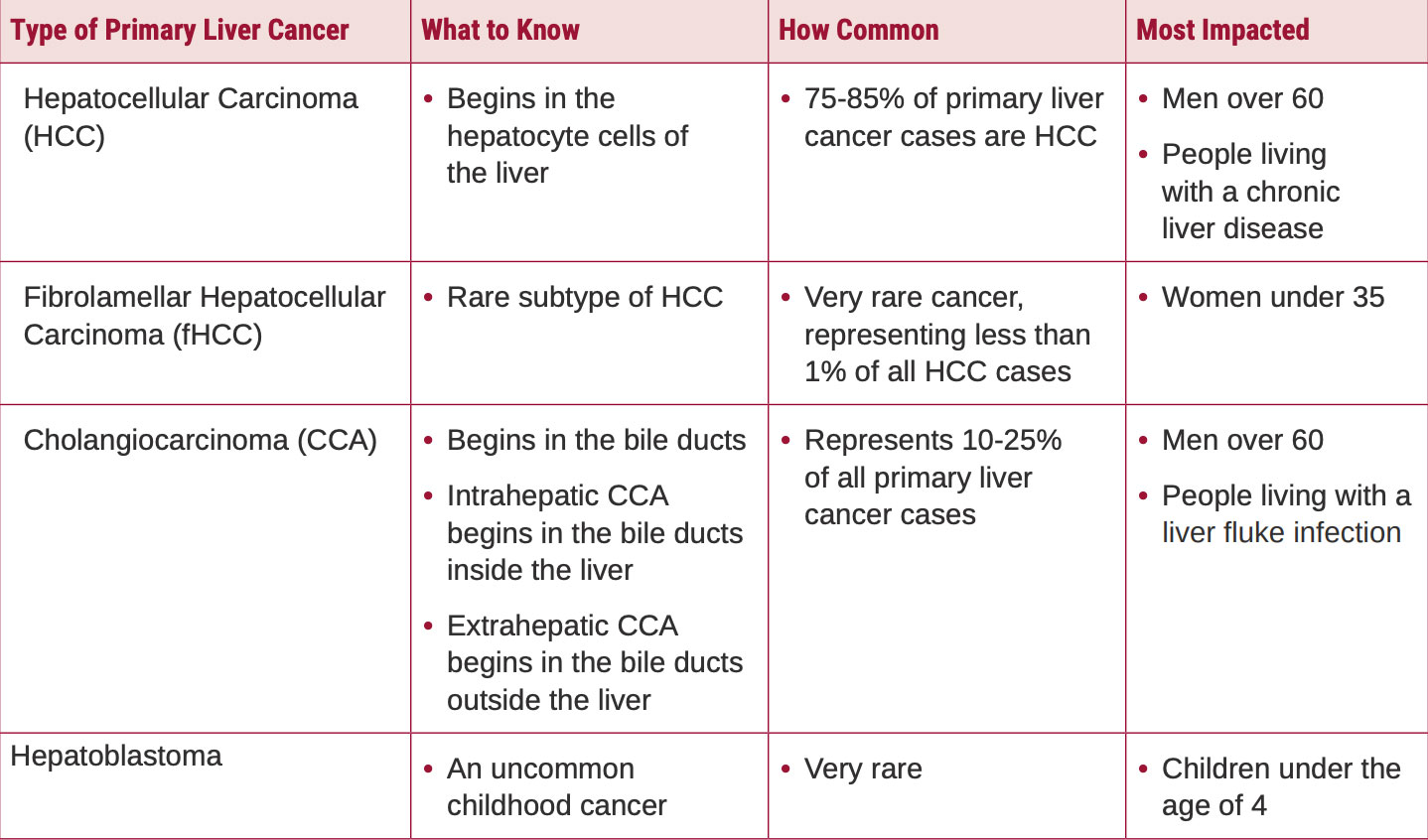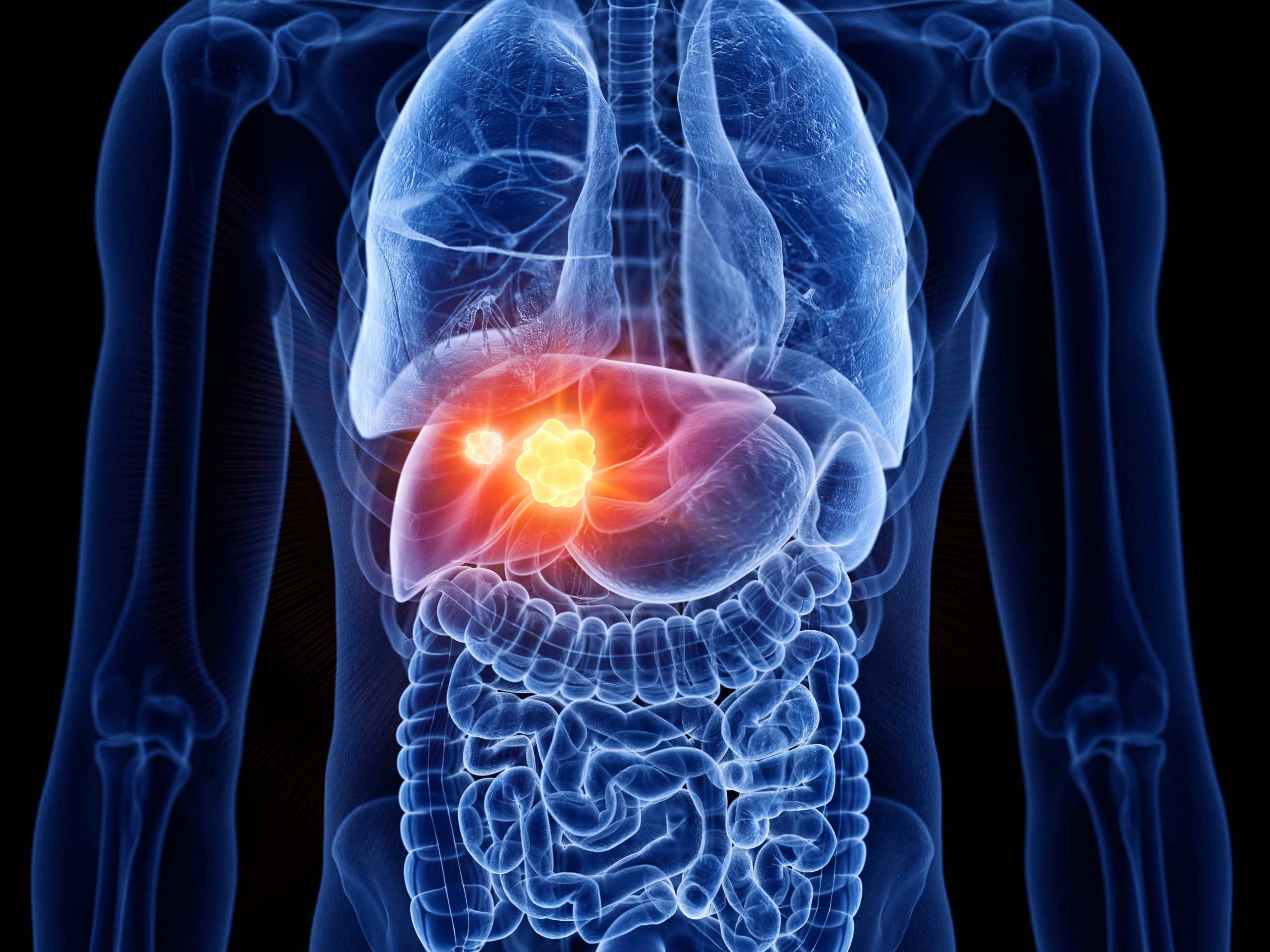New Patient
Throughout Liver Central we have information, resources, and data to help you understand liver cancer diagnosis, treatment options, managing the disease and living with liver cancer. Visit https://www.globalliver.org/liver-cancer-lessons to learn about risks, screening, diagnosing, and treatment options for liver cancers.
As you get started on this journey it is important to understand the different types of liver cancer as that will impact next steps, treatment decisions and your care.
There are different types of primary liver cancers. Liver cancers are named based on the type of cell they originate in or how they look under the microscope.
First, let’s take a look at the role of the liver in your body.
The liver is the largest organ in the human body, after the skin. It is football sized and sits in the upper right part of the abdomen, beneath the diaphragm and above the stomach. The liver is very busy and has more than 500 jobs such as:
- Process and stores nutrients
- Remove waste from blood
- Filter and detoxify chemicals
- Produce bile to aid with digestion
- Produce albumin which helps maintain the blood volume
- Produce coagulation factors that prevent bleeding
- and many other tasks
Compared to other organs, the liver has an exceptional capacity to repair itself, or regenerate, when injured or damaged. This may be in part because it has the job of protecting the body against toxins and has to be able to replace any cells injured by exposure to toxins. While this regenerative capacity usually lasts a lifetime, in cases where there is ongoing chronic injury to the liver for an extended period of time, the liver exhausts its capacity to repair itself.
Cancer is a disease that begins in cells, which are the building blocks that make up all tissue and organs of the body, including the liver. Normal cells grow, divide, and die on a regular schedule. Sometimes something goes wrong with this process and the cells grow faster and don’t die as they should, creating a growth or tumor. Tumors can be benign, meaning not cancer, or malignant, meaning cancer.
What should you do if you or a loved one has just been diagnosed with cancer of the liver? First, take a moment to breathe. After that, your priority is to find out as much as you can about your diagnosis and work with your doctor to make a plan that is right for you or your loved one. Learning you or a loved one has liver cancer can be a scary and uncertain time. You are not alone and looking for information here on our website is a great start.
Primary liver cancer is cancer that begins in the cells of the liver.

Hepatocellular Carcinoma (HCC) is the most common type of liver cancer making up approximately 85% of new liver cancer cases. Hepatocellular carcinoma is cancer that begins in the hepatocytes in the liver. Hepatocytes perform most of the processing and detoxifying work of the liver. Most HCC, more than 90%, occurs in people with a chronic liver disease such as viral hepatitis, alcohol-related liver disease, or Nonalcoholic Steatohepatitis (NASH).
Cholangiocarcinoma (CCA) is a less common cancer that develops in the bile ducts. Intrahepatic cholangiocarcinoma begins in the smaller bile ducts located inside the liver and extrahepatic cholangiocarcinoma begins in the larger bile ducts outside of the liver.
Extrahepatic cholangiocarcinomas are sometimes divided into peri-hilar or hilar cholangiocarcinomas which are in the bile ducts right close to the liver, and distal cholangiocarcinomas which are in the section of the bile ducts closer to where the bile ducts drain into the small intestine.
Mixed hepatocellular-cholangiocarcinoma are tumors that have some features of both hepatocellular carcinoma and cholangiocarcinoma.
Fibrolamellar Hepatocellular Carcinoma (fHCC) is a very rare cancer that also develops from the hepatocytes. Fibrolamellar HCC can develop in younger people without any known risk factors. The cancerous tumors stimulate growth of sheets of scar tissue cells, resulting in a unique, “lamellar” pattern under the microscope.
Hepatoblastoma (HB) is a very rare cancer that is almost always seen in children under the age of three. It begins in the primitive hepatic stem cells that give rise to the hepatocytes of the liver.
Secondary liver cancer is cancer that begins in another part of the body and spreads to the liver
Sometimes cancer that begins in another area of the body spreads to other parts of the body, including the liver, this is called secondary liver cancer or cancer that has metastasized to the liver. This is very common in breast, lung, colorectal cancers, and malignant melanomas (skin cancers).


